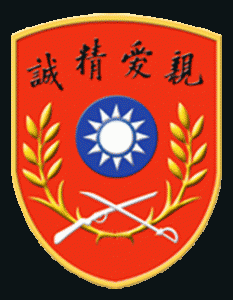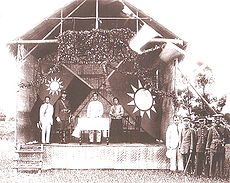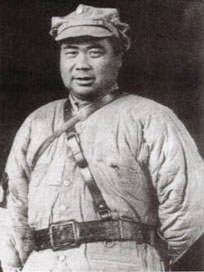History of the PRC – Part Six Posted by sasha on Nov 7, 2010 in Uncategorized
In 1921, the Chinese Communist Party (中国共产党 – Zhōngguó Gòngchǎndǎng) was founded in Shanghai. The momentum from the May Fourth Movement, the popularity of Marxism, and the workers’ movement all came together to form the CCP. Obviously, this is a crucial development in the story of modern day China.
With the Zhili Clique now in control, some changes had to be made. It was demanded that Xu Shichang and Sun Yat-sen both resign from their respective presidential positions in favor of Li Yuanhong. Having served as President a few years earlier, Li was respected by all of the rivaling factions. His second term began on June 11, 1922, and he quickly restored the National Assembly.
Elsewhere, Sun Yat-sen and his Kuomintang were making plans to forcefully unify the country. The KMT was denied any assistance from western powers, so they went knocking on the door of the Soviet Union instead. Leaders from the Soviet Union, such as Mikhail Borodin, appeared in China in 1923 in order to reorganize the KMT so that it would resemble the Communist Party of the Soviet Union.
There being power in numbers, Sun and the KMT encouraged members of the CCP to join them while maintaining their separate party identities. Under instruction from the Comintern in Moscow, CCP members cooperated with the KMT, at least temporarily. Thus began a massive revolution against feudalism and imperialism in China, with the CCP and KMT working together under close supervision and instruction from the Soviets. The Soviets also helped the KMT set up a political institute to train propagandists in mass mobilization techniques. This training center came to be known as the Whampoa Military Academy (黄埔军校 – Huángbù jūnxiào). During the inaugural ceremonies, Sun gave a speech that would later be used to write the national anthem of the Republic of China. Sun’s ultimate goal was to unite China under his Three Principles (三民主义 – Sānmín zhǔyì): nationalism (民族 – mín zú), democracy (民权 – mín quán), and the people’s welfare/livelihood (民生 – mín shēng). One of Sun’s proteges, Chiang Kai-shek (蒋中正 – Jiǎng zhōngzhèng), was even sent to Moscow for military and political study.
Up north in Beijing, things were about to change yet again. Having recently restored Li as President, Cao Kun started to have some presidential ambitions of his own. Deciding to do things the old fashioned way, Cao bribed members of the assembly to get him into office. This move turned all rival factions against him and even caused some dissent within his own party.
In 1924, Cao and his Zhili Clique would find themselves again feuding with the Fengtian Clique. This time, the argument was over the control of Shanghai. Eager to avenge their devastating loss in the previous war, the Fengtian made vast improvements to their military. In addition, they teamed up with Sun’s the KMT and Anhui warlord Lu Yongxiang. Soon enough, the Second Zhili-Anhui War (第二次直奉战争 – Dì èr cì zhí fèng zhànzhēng) was full throttle. Once again, it was Wu Peifu up against Zhang Zuolin.
The outcome of the second war would turn out to be exactly the opposite of the first. This time around, the Fengtian forces were much better prepared. Not only had they made vast military improvements, but they also made key alliances that helped bring down the Zhili. Most important was their recruiting of Feng Yuxiang (冯玉祥), a Zhili general. In October 1924, Feng and his defense troops pulled off the Beijing coup (北京政变 – Běijīng zhèngbiàn), seizing control of government buildings and the roads leading in and out of Beijing. Cao was placed under house arrest and was stripped of his presidency. Shortly thereafter, he would be thrown in jail. He also had the Last Emperor, Puyi, evicted from the Forbidden City. Feng then formed the Guominju (国民军, or Nationalist Army. Northern China would be split between Feng (northwest) and Zhang Zuolin (northeast). They decided to bring Duan Qirui back to power, however this time around he would be called the Chief Executive of China and not the President. For the time being, the presidency would belong to Huang Fu (黃郛).
Plans were made for Feng, Duan, Zhang, and Sun to discuss national reunification in Beijing. Sun came to Beijing but the peace talks would never happen, as Sun died from lung cancer in Beijing. Instead of a peaceful, unified China, the conflicts only became more and more intense…

Build vocabulary, practice pronunciation, and more with Transparent Language Online. Available anytime, anywhere, on any device.
About the Author: sasha
Sasha is an English teacher, writer, photographer, and videographer from the great state of Michigan. Upon graduating from Michigan State University, he moved to China and spent 5+ years living, working, studying, and traveling there. He also studied Indonesian Language & Culture in Bali for a year. He and his wife run the travel blog Grateful Gypsies, and they're currently trying the digital nomad lifestyle across Latin America.







Leave a comment: